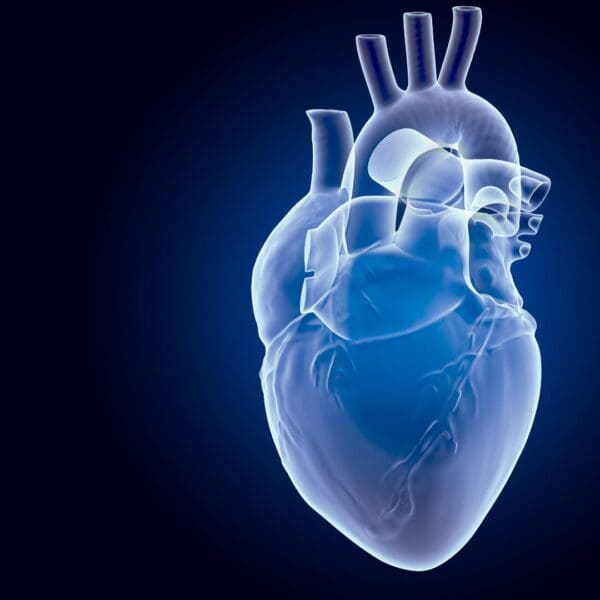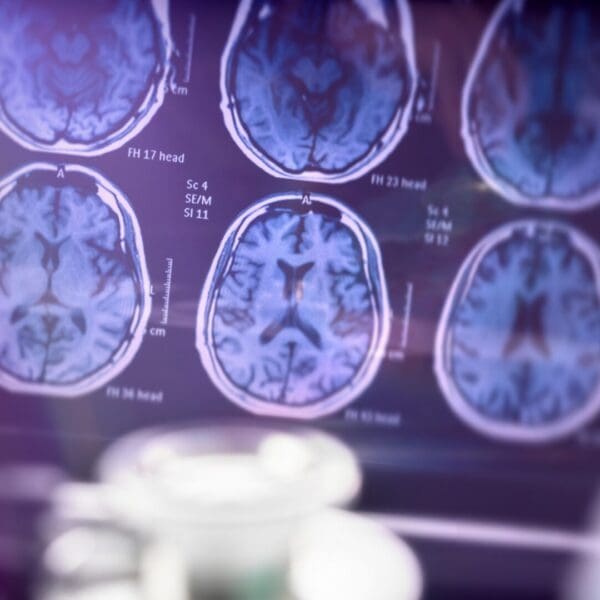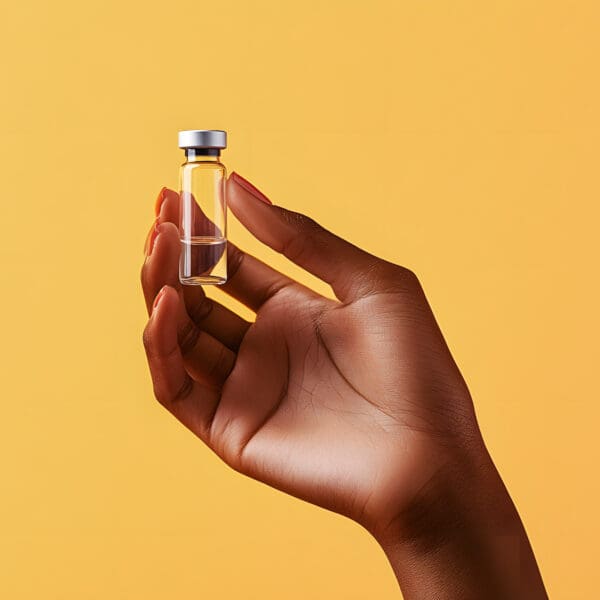The Growing Challenge of Inflammaging
As the global population ages, with more people living beyond 50 than ever before, we’re seeing a sharp rise in age-related diseases. At the core of this issue is “inflammaging,” a term that describes the chronic, low-grade inflammation that becomes increasingly common with age.
Think of inflammaging as a slow-burning fire inside the body that never fully goes out. Over time, this persistent inflammation damages tissues and contributes to a wide range of conditions, including heart disease, diabetes, arthritis, and neurodegenerative disorders.
What Causes Inflammaging?
Several interconnected biological processes fuel this chronic inflammation:
- Oxidative Stress
As we age, the body produces more reactive oxygen species (ROS) while becoming less efficient at neutralizing them. This imbalance damages cellular components. - DAMPs Production
Oxidized proteins, lipids, and DNA generate damage-associated molecular patterns (DAMPs). These molecules serve as alarm signals, triggering inflammation even when no infection is present. - Cellular Senescence
Aging cells enter a state called senescence, where they no longer divide but remain metabolically active. These “zombie” cells accumulate and release inflammatory substances instead of undergoing proper cell death. - The SASP Factor
Senescent cells secrete a mix of inflammatory cytokines, growth factors, and enzymes, known as the senescence-associated secretory phenotype (SASP), which spreads inflammation to neighboring tissues. - Immunosenescence
As immune cells age, they become less effective at defending against infections while paradoxically increasing their production of inflammatory molecules.
The Body’s Natural Defense: The Nrf2-HO-1 Pathway
Nature provides a built-in defense system to combat oxidative stress and inflammation, known as the Nrf2-HO-1 pathway. This system acts like a thermostat, regulating the body’s response to cellular stress.
How the Nrf2 System Works
Under normal conditions, a protein called Keap1 anchors Nrf2 (Nuclear factor erythroid 2-related factor 2) in the cytoplasm. When oxidative stress occurs:
- Stress signals cause Keap1 to release Nrf2
- Nrf2 travels to the cell nucleus
- It binds to Antioxidant Response Elements (AREs) in the DNA
- This activates the production of protective proteins and enzymes
Among these protective enzymes are glutathione, superoxide dismutase (SOD), and most importantly, heme oxygenase-1 (HO-1).
Why HO-1 Matters
HO-1 plays a crucial role by breaking down free heme, a pro-oxidant, into three beneficial byproducts:
- Biliverdin, which rapidly converts to bilirubin, a powerful antioxidant
- Carbon monoxide, in small amounts, which acts as an anti-inflammatory signaling molecule
- Iron, which promotes ferritin production to safely store iron and prevent oxidative damage
Low HO-1 levels have been linked to increased inflammation and susceptibility to oxidative stress. In contrast, elevated HO-1 expression offers protection against numerous inflammatory and age-related diseases.
The Age-Related Decline in Nrf2
Unfortunately, Nrf2 activity decreases with age. This reduction sets off a destructive cycle:
- Less Nrf2 activation
- More oxidative stress
- Increased inflammation
- Accelerated tissue damage and aging
The “Oxi-Inflamm-Aging” Theory
This concept describes how oxidative stress and inflammation reinforce one another in a vicious cycle:
- Oxidative stress activates inflammatory cells
- Inflammatory cells produce more ROS
- ROS cause further oxidative stress
- The loop continues, amplifying age-related damage
This pattern underlies many chronic conditions:
- Cardiovascular disease: Oxidized LDL cholesterol triggers vascular inflammation
- Heart attacks: ROS impair cardiac repair mechanisms
- Osteoarthritis: Oxidative stress degrades cartilage and promotes joint inflammation
- Neurodegenerative disorders: ROS contribute to neuron death and brain inflammation
EBO2 (Ozone Dialysis) and Nrf2-HO-1 Activation
What Is EBO2?
Extracorporeal Blood Oxygenation and Ozonation (EBO2) is an advanced medical therapy that:
- Withdraws a portion of the patient’s blood
- Exposes it to a controlled mixture of oxygen and ozone
- Returns the treated blood to the body
Though the process may sound simple, its cellular effects are powerful.
How EBO2 Activates the Nrf2-HO-1 Pathway
1. Hormetic Stress Response
EBO2 works on the principle of hormesis, where a small amount of stress triggers protective biological adaptations. The mild oxidative stress from ozone exposure is just enough to stimulate Nrf2 without causing harm. This is similar to how exercise temporarily stresses the body in a way that leads to long-term benefits.
2. Enhanced Nrf2 Translocation
Research shows ozone exposure is particularly effective at activating Nrf2. While most pharmaceutical agents target one pathway, ozone generates multiple activation signals. The ozone-modified molecules continue to stimulate Nrf2 activity for days, leading to prolonged therapeutic benefits.
3. Powerful HO-1 Induction
As Nrf2 enters the nucleus, it significantly boosts HO-1 production in circulating blood cells. Post-EBO2 measurements show HO-1 levels can increase by 2 to 4 times, offering substantial antioxidant and anti-inflammatory protection.
4. Systemic Anti-Inflammatory Effects
HO-1 byproducts exert wide-ranging anti-inflammatory actions:
- Carbon monoxide reduces pro-inflammatory cytokine production
- Bilirubin neutralizes ROS
- Ferritin prevents iron-induced oxidation
Together, these effects directly counteract inflammaging.
5. Interrupting the Senescence Cycle
EBO2 reduces both oxidative stress and inflammation, which:
- Lowers the rate of cellular senescence
- Decreases SASP production
- Improves immune clearance of senescent cells
This disrupts a major driver of chronic inflammation and aging.
6. Immune Rejuvenation
By activating Nrf2-HO-1, EBO2 helps restore immune function:
- Dampens inflammatory signaling in aging immune cells
- Enhances regulatory T-cell function
- Boosts natural killer cell activity
- Minimizes oxidative damage to immune cells
These changes support a more balanced, youthful immune response.
7. Red Blood Cell Transformation
EBO2 therapy also reconditions red blood cells:
- Increases membrane flexibility and oxygen delivery
- Lowers inflammatory surface markers
- Converts RBCs into anti-inflammatory agents
This transformation explains why EBO2-treated red blood cells can be safely used in joint therapies without provoking inflammation. They have essentially been reprogrammed to support healing.
Real-World Applications of Nrf2-HO-1 Activation via EBO2
EBO2’s ability to stimulate Nrf2-HO-1 offers potential benefits across multiple age-related conditions:
Cardiovascular Disease
EBO2 helps reduce oxidized LDL, calm vascular inflammation, and improve endothelial function, all key factors in heart disease prevention and recovery.
Autoimmune Conditions
HO-1’s immunomodulatory effects restore immune balance without suppressing necessary defenses. Nrf2 activation also plays a central regulatory role.
Neurodegenerative Disorders
Reducing neuroinflammation and oxidative damage via Nrf2-HO-1 may slow progression in conditions such as Alzheimer’s and Parkinson’s.
Metabolic Disorders
Nrf2 activation improves insulin sensitivity, reduces inflammation in fat tissue, and supports metabolic health. EBO2 may also influence the AMPK and mTOR pathways.
The Future of Nrf2-HO-1 Therapies
As research evolves, EBO2 may serve as the foundation of advanced, personalized strategies to combat inflammaging. Future directions include:
- Combining EBO2 with targeted Nrf2 activators
- Personalizing protocols based on individual inflammation profiles
- Long-term programs to sustain benefits
- Preventive use in high-risk aging populations
Conclusion
The Nrf2-HO-1 pathway is one of the body’s most powerful defenses against oxidative stress and inflammation, which are two root causes of aging and chronic disease. EBO2 offers a safe, non-pharmaceutical method to stimulate this pathway and counteract inflammaging at the molecular level.
Rather than masking symptoms, EBO2 activates the body’s own defenses. This marks a shift from symptom management to true cellular rejuvenation.
Because many age-related diseases share common inflammatory origins, therapies that activate Nrf2-HO-1 may offer broad benefits across multiple conditions. This makes them especially valuable in addressing the complex health challenges of our aging population.
– Dr. Purita















